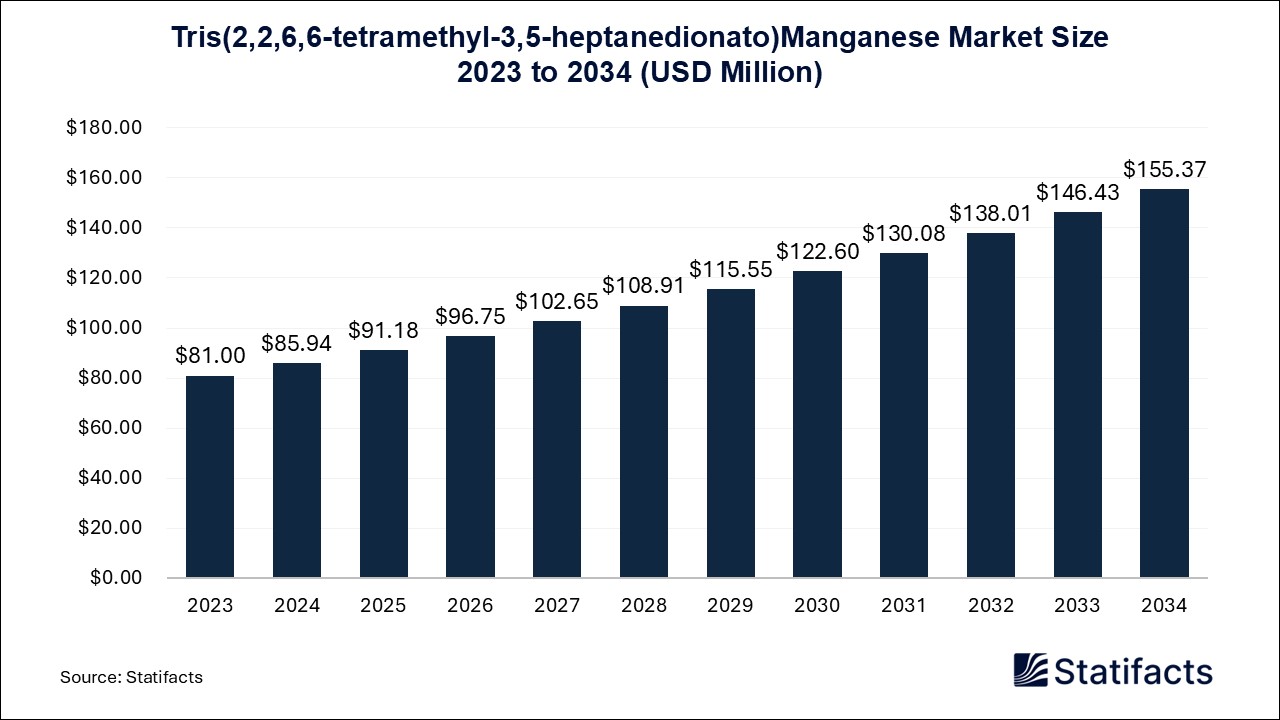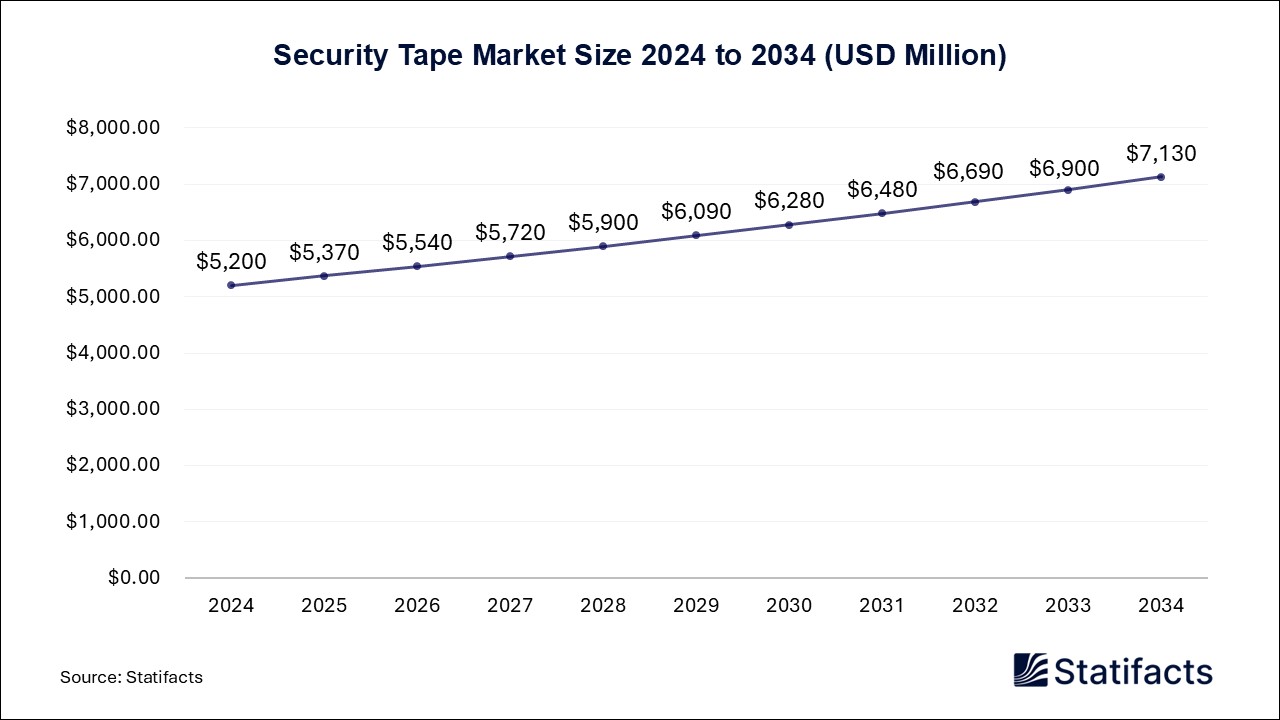Last Updated: 08 Jul 2025
Source: Statifacts
By clicking “Accept All Cookies” you agree to the storing of cookies on your device to enhance site navigation, analyze site usage, and assist in our marketing efforts.
Privacy PolicyThe US disposable surgical supplies market size accounted for USD 2.99 billion in 2024 and is predicted to touch around USD 6.05 billion by 2034, growing at a CAGR of 7.3% from 2025 to 2034.
| Industry Worth | Details |
| Market Size in 2025 | USD 3.18 Billion |
| Market Size by 2034 | USD 6.05 Billion |
| Market Growth Rate from 2025 to 2034 | CAGR of 7.3% |
The U.S. disposable surgical supplies market is characterized by a rising requirement for single-use instruments and equipment that improve infection control and reduce cross-contamination during surgical procedures. Growing surgical procedures, enhanced healthcare standards, and heightened patient safety awareness are driving the market. The rise in the need for disposable surgical devices is driven by a combination of healthcare system dynamics, regulatory influences, and demographic shifts over a broad array of global markets. The growing government initiatives for the use of disposable medical apparatus to avoid hospital-linked infections are anticipated to drive the usage of single-use devices. The increasing number of surgical procedures is anticipated to increase the demand for disposable surgical apparatus.
AI can provide new insights that can change the operational environment in various ways. Its procedures are like organ transplantation. Moreover, AI is transforming into intraoperative guidance, enhancing the detection of cancers, enabling endovascular navigation, and guaranteeing the reduction of collateral damage to adjacent tissues during surgery. AI can also raise efficiency and staff, and coordinate the utilization of critical resources and throughput of operating rooms, such as intensive care unit beds, as well as ventilators.
Emphasis on infection prevention and control
Disposable surgical supplies play a crucial role in minimizing the risk of HAIs, which can contribute to serious complications for patients and raise healthcare expenses. The increasing number of surgical procedures, which includes minimally invasive surgeries, and the growing need for outpatient care are boosting the acceptance of disposable surgical instruments. The COVID-19 pandemic has thus highlighted the significance of infection control and has contributed to increased requirements for single-use medical products, including those utilized in surgical settings.
Expansion of healthcare infrastructure
Developing countries are building new clinics, hospitals, and diagnostic centers, expanding access to healthcare services. This expansion naturally contributes to a higher need for medical supplies, which includes disposable surgical instruments. The rising incidence of chronic diseases, as well as an aging population, led to a higher number of surgical procedures. This directly translates to a higher demand for disposable surgical instruments and associated supplies. While reusable surgical instruments can be more cost-effective in the long run, disposable options provide advantages such as reduced sterilization expenses, decreased risk of cross-contamination, and convenience, mainly in resource-limited settings.
Contamination of surgical equipment
Reusable surgical instruments need thorough disinfection, cleaning, and sterilization after each use. This procedure can be complex, prone to errors, and time-consuming, potentially leading to incomplete sterilization and the existence of pathogens. Single-use instruments guarantee a sterile instrument for each procedure, lessening the risk of cross-contamination and providing better infection control practices. The sterile disposable surgical instruments market is undergoing significant growth, boosted by the demand to minimize infection risks and enhance patient safety.
Technological advancements
Innovations in device design aim to enhance user maneuverability and comfort, contributing to better surgical control and decreased surgeon fatigue. Developments in bioresorbable materials permit the making of disposable surgical apparatus that can be absorbed by the body, thus reducing the demand for removal and potential complications. Minimally invasive procedures usually require specialized disposable instruments, boosting demand for these devices.
Increasing demand for advanced healthcare services
The increasing prevalence of chronic disorders, an aging population, and development in medical technology are contributing to a rise in both outpatient and inpatient surgical procedures. Innovations in disposable surgical products, which include enhanced materials, improved functionality, and ergonomic designs, are making them more attractive to healthcare providers. Strict hygiene protocols and supportive government regulations continue to stimulate the widespread usage of disposable surgical supplies, thus boosting market expansion.
“Symmetry has a longstanding history of providing high-quality surgical devices and value-added services to the health care community, including iconic brands such as Bovie®, Bookwalter®, and Greenberg®,” said Jason Krieser, CEO of Aspen. “The portfolio is synergistic with Aspen and supports our mission to deliver essential products that improve safety and efficiency in the surgical environment.”
“Our acquisition of Obp Surgical demonstrates our commitment to our customers, rooted in a dedication to upholding the highest standards,” said Holly Sheffield, CooperSurgical President. “We are excited for our growing surgical portfolio to reach new heights with the addition of ONETRAC™ to the CooperSurgical product family, all to help ensure that healthcare providers are well-equipped with differentiated medical devices.”
“Integrating Artelon’s portfolio into Stryker’s offerings will allow us to deliver best-in-class soft tissue fixation solutions,” said Tim Lanier, president of Stryker’s Trauma & Extremities division. “This acquisition strengthens our competitive edge. Leveraging Artelon’s unique synthetic technology and extensive expertise positions us to continue driving innovation and solidify our leadership in the foot and ankle and sports medicine segments.”
The surgical non-woven segment dominated the U.S. disposable surgical supplies market in 2024. This dominance is largely due to the widespread usage of non-woven materials in numerous single-use surgical products such as drapes, gowns, caps, and masks. Non-woven fabrics are the material of choice for a wide array of single-use surgical supplies due to their functionality and cost-effectiveness. Non-woven materials provide a balance of performance and affordability, making them a practical alternative to disposable products.
The examination & surgical gloves segment is the fastest growing in the U.S. disposable surgical supplies market during the forecast period. The essential of infection prevention in healthcare settings, mainly in surgical environments, is contributing to greater acceptance of disposable gloves. There is an increasing trend towards eco-friendly and sustainable glove materials, like biodegradable options, reflecting rising environmental awareness. Beyond traditional surgical settings, disposable gloves are being found for use in routine checkups, dental procedures, and other medical applications.
The needles and syringes segment shows notable growth in the U.S. disposable surgical supplies market during the forecast period. A rise in chronic illnesses such as cardiovascular diseases and diabetes necessitates more often injections and infusions, boosting the need for disposable syringes and needles. Large-scale vaccination and immunization campaigns, both for routine youth vaccinations and emerging disease outbreaks, remarkably increase the need for disposable syringes and needles.
The disposable surgical supplies market is greatly competitive and rapidly growing, boosted by factors such as increasing surgical procedures, target infection control, and developments in medical technology. Key players are tactically differentiating themselves via product innovation, pricing, customer experience, and strategic partnerships.
Stryker Corp is a medical technology firm that produces medical, surgical, orthopedic, and neurotechnology products, along with spine products. It provides neurosurgical equipment, spinal and neurovascular devices, and medical devices for use in a variety of conditions. Stryker provides its products to hospitals, doctors, and other healthcare facilities.
Aspen Surgical tackles competition from numerous medical devices and surgical supply firms. Aspen Surgical has also stretched its competitive landscape via acquisitions, primarily the acquisition of Symmetry Surgical.
Published by Kesiya Chacko
Last Updated: 08 Jul 2025
Source: Statifacts
Last Updated: 08 Jul 2025
Source: Statifacts
| Subsegment | 2024 | 2025 | 2026 | 2027 | 2028 | 2029 | 2030 | 2031 | 2032 | 2033 | 2034 |
|---|---|---|---|---|---|---|---|---|---|---|---|
| Surgical Non-woven | 744.60 | 793.30 | 847.10 | 906.70 | 972.70 | 1,046.00 | 1,127.30 | 1,217.80 | 1,318.50 | 1,430.80 | 1,555.90 |
| Examination & Surgical Gloves | 598.20 | 640.40 | 687.00 | 738.70 | 796.10 | 859.90 | 930.90 | 1,010.00 | 1,098.30 | 1,197.00 | 1,301.60 |
| General Surgery General Surgery Procedural Kits | 452.00 | 481.90 | 515.00 | 551.60 | 592.20 | 637.20 | 687.30 | 742.90 | 804.90 | 874.10 | 950.50 |
| Needles and Syringes | 609.90 | 637.60 | 668.00 | 701.20 | 737.70 | 777.60 | 821.40 | 869.40 | 922.00 | 979.90 | 1,065.50 |
| Venous Access Catheters | 588.70 | 624.30 | 663.60 | 707.00 | 755.00 | 808.20 | 867.10 | 932.40 | 1,004.90 | 1,085.60 | 1,180.50 |
Last Updated: 08 Jul 2025
Source: Statifacts
| Subsegment | 2024 | 2025 | 2026 | 2027 | 2028 | 2029 | 2030 | 2031 | 2032 | 2033 | 2034 |
|---|---|---|---|---|---|---|---|---|---|---|---|
| Surgical Non-woven | 744.60 | 793.30 | 847.10 | 906.70 | 972.70 | 1046 | 1,127.30 | 1,217.80 | 1,318.50 | 1,430.80 | 1,555.90 |
| Examination & Surgical Gloves | 598.20 | 640.40 | 687 | 738.70 | 796.10 | 859.90 | 930.90 | 1010 | 1,098.30 | 1197 | 1,301.60 |
| General Surgery General Surgery Procedural Kits | 452 | 481.90 | 515 | 551.60 | 592.20 | 637.20 | 687.30 | 742.90 | 804.90 | 874.10 | 950.50 |
| Needles and Syringes | 609.90 | 637.60 | 668 | 701.20 | 737.70 | 777.60 | 821.40 | 869.40 | 922 | 979.90 | 1,065.50 |
| Venous Access Catheters | 588.70 | 624.30 | 663.60 | 707 | 755 | 808.20 | 867.10 | 932.40 | 1,004.90 | 1,085.60 | 1,180.50 |
Growth is driven by rising surgical volumes, increased awareness of infection control, and a growing preference for single-use products to minimize cross-contamination risks in healthcare settings.
Needles and syringes hold the largest share due to high usage frequency, while general surgery procedural kits are among the fastest-growing segments due to convenience and time efficiency.
Hospitals lead in usage, followed by ambulatory surgical centers and clinics, as these facilities prioritize sterile environments and streamlined surgical workflows.
The pandemic accelerated demand for single-use items like masks, gloves, and gowns, reinforcing the need for infection prevention and boosting market awareness across all surgical categories.
Key challenges include environmental concerns about medical waste, fluctuating raw material costs, and the need for sustainable alternatives without compromising sterility or performance.
To get full access to our Market Insights, you need a Professional Account or a Business Suite.

You will receive an email from our Business Development Manager. Please be sure to check your SPAM/JUNK folder too.

You will receive an email from our Business Development Manager. Please be sure to check your SPAM/JUNK folder too.

Our customers work more efficiently and benefit from



